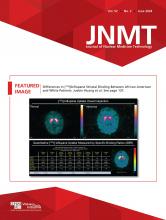Abstract
Internal dosimetry evaluates the amount and spatial and temporal distributions of radiation energy deposited in tissue from radionuclides within the body. Historically, nuclear medicine had been largely a diagnostic specialty, and the implicitly performed risk–benefit analyses have been straightforward, with relatively low administered activities yielding important diagnostic information whose benefit far outweighs any potential risk associated with the attendant normal-tissue radiation doses. Although dose estimates based on anatomic models and population-average kinetics in this setting may deviate rather significantly from the actual normal-organ doses for individual patients, the large benefit-to-risk ratios are very forgiving of any such inaccuracies. It is in this context that the MIRD schema was originally developed and has been largely applied. The MIRD schema, created and maintained by the MIRD committee of the Society of Nuclear Medicine and Molecular Imaging, comprises the notation, terminology, mathematic formulas, and reference data for calculating tissue radiation doses from radiopharmaceuticals administered to patients. However, with the ongoing development of new radiopharmaceuticals and the increasing therapeutic application of such agents, internal dosimetry in nuclear medicine and the MIRD schema continue to evolve—from population-average and organ-level to patient-specific and suborgan to voxel-level to cell-level dose estimation. This article will review the basic MIRD schema, relevant quantities and units, reference anatomic models, and its adaptation to small-scale and patient-specific dosimetry.
- radiobiology/dosimetry
- radionuclide therapy
- radiopharmaceuticals
- dosimetry
- MIRD
- radiopharmaceutical therapy
Footnotes
CE credit: For CE credit, you can access the test for this article, as well as additional JNMT CE tests, online at https://www.snmmilearningcenter.org. Complete the test online no later than June 2027. Your online test will be scored immediately. You may make 3 attempts to pass the test and must answer 80% of the questions correctly to receive 1.0 CEH (Continuing Education Hour) credit. SNMMI members will have their CEH credit added to their VOICE transcript automatically; nonmembers will be able to print out a CE certificate upon successfully completing the test. The online test is free to SNMMI members; nonmembers must pay $15.00 by credit card when logging onto the website to take the test.
Published online Mar. 12, 2024.







